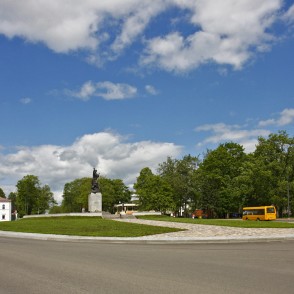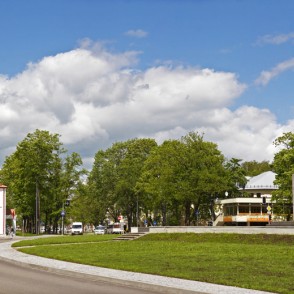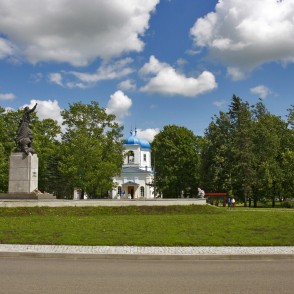The monument to the liberation of Latgale (popularly known as "Latgales Māra") is the most recognizable symbol of Rēzekne. Dedicated in 1920 to the participants of the Latvian freedom struggle and embodies the idea of the freedom and unity of the Latvian state. The monument was opened in 1939. (artist L. Tomasickis, sculptor K. Jansons), its bronze sculptural composition consists of: a chain puller, symbolizing the freedom won by the heroic sons of Latgale over foreign powers, a kneeling girl next to him crowns the liberator with a wreath of oak leaves, and above both figures - a national daughter who in his hand he holds a raised golden cross - symbolizing faith and satisfaction for regained freedom.
1940 the monument was demolished in 1943 it was restored, but in 1950 the ruling power destroyed it. In 1992, thanks to the funds donated by the people, the monument rose again in all its glory on the hill of Liberation Alley (sculptor A. Jansons).
militaryheritagetourism.info
Located in the centre of Atbrīvošanas Alley, this statue is a monument to the liberation of Latgale and the unity of Latvia and is officially called “Unified for Latvia.” The bronze monument was unveiled in 1939 (sculptor K. Jansons, designer L. Tomačisks). In 1940, the Soviet regime tried to destroy the monument, but it was restored in August 1943. A second attempt to destroy the monument occurred in June 1950, and this time the process was successful. After the restoration of Latvia’s independence, “Māra of Latgale” was installed for a third time on August 3, 1992, sculpted by the son of K. Jansons, A. Jansons, on the basis of old designs. “Māra of Latgale” is one of the best examples of monumental sculpture in Latvia. Latvian mythology personifies the goddess Māra as a provider of fertility for earth and a protection of life. The cross that is part of the ensemble is a symbol of the Christian faith.
www.celotajs.lv





